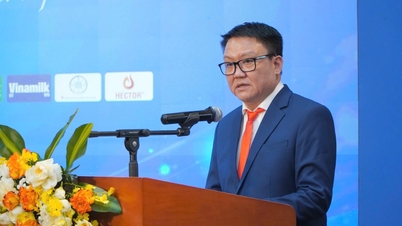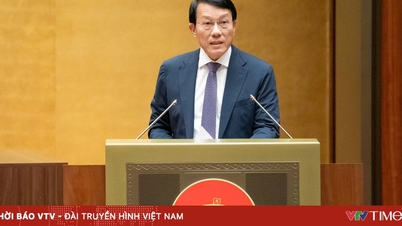
The US will give each citizen $2,000 from tax revenue.
In a message posted on Truth Social on November 9, President Trump wrote: “All remaining funds from the $2,000 payments to low- and middle-income Americans — taken from the massive tariffs other countries are paying to the United States — will be used to pay down a large portion of the national debt. Thank you for your attention! — President Donald J. Trump.”
The Trump administration is tapping record tariffs from countries like China, Mexico, and the European Union (EU) to fund a Direct Relief Payments package that will see low- and middle-income Americans receive $2,000. The remaining money will go directly to paying off the federal debt, according to a White House announcement.
A senior economic adviser at the Treasury Department said this is President Trump's dual strategy - both helping the American people reduce their spending burden and forcing countries that have benefited from unfair trade to pay back the US. The official said: "No administration in modern history has simultaneously reduced domestic taxes for its citizens and used international tariffs to pay off the public debt like this."
President Trump asserted that the “America First Trade Policy” had completely reversed decades of budget deficits, forcing “countries that took advantage of the United States to now pay back tens of billions of dollars every year.”

Economists say the idea of “tax revenue” is a vicious cycle.
Financial observers in New York said the move was a “strategic and symbolic move” that clearly demonstrated President Trump’s goal: using economic power and tariffs to restore trade fairness, while strengthening confidence in the US dollar and US power.
The idea isn’t new, but it’s at odds with previous statements from administration officials and even President Trump himself. Last summer, Sen. Josh Hawley (R-Mo.) introduced a similar bill that would return $600 to most Americans and their dependent children, calling it a “tariff rebate.” “My bill would allow American workers to reap the benefits of the money that Trump’s tariffs are bringing into our country,” Hawley said.
However, Treasury Secretary Scott Bessent told CNBC in August that the administration ’s top priority was using tariff revenue to pay down the national debt. Trump himself reiterated in a recent tweet that “the massive amounts of money from tariffs will be used to pay down this massive national debt.”
According to the US Treasury Department, the government collected only $195 billion in import tariffs in the first three quarters of this year, a figure far short of what would be needed to pay $2,000 to every American, which would require trillions of dollars, a figure that is fiscally unrealistic.
Additionally, according to Yale University, as of October 17, American consumers were facing an average import tax of 18%, the highest level since 1934. After President Trump imposed broad tariffs on global trading partners in April 2025, businesses passed the cost of these tariffs onto their selling prices, forcing people to pay higher prices for goods.
Economists say the idea of “tax money” is a vicious cycle, the government taxes imported goods, causing consumer prices to increase, then uses that money to give to people as a “reward”. Many experts call this “the snake eating its own tail”, because the source of money that people receive is actually the amount they had to pay extra when buying goods.
If President Trump’s plan comes to fruition, people could receive a few thousand dollars, but rising living costs, high inflation and expensive imports could make that “income” less than enough to offset the losses.
Lawmakers in Washington are still waiting for the White House to clarify details of President Trump's plan.
Source: https://vtv.vn/my-se-phat-cho-moi-nguoi-dan-2000-usd-tien-thu-tu-thue-quan-100251111084855214.htm



![[Photo] Chu Noodles - the essence of rice and sunshine](https://vphoto.vietnam.vn/thumb/1200x675/vietnam/resource/IMAGE/2025/11/11/1762846220477_ndo_tl_7-jpg.webp)



![[Photo] Prime Minister Pham Minh Chinh chairs a meeting on housing policy and the real estate market.](https://vphoto.vietnam.vn/thumb/1200x675/vietnam/resource/IMAGE/2025/11/11/1762838719858_dsc-2107-jpg.webp)



























































































![Dong Nai OCOP transformation: [Article 4] Reaching national standard products](https://vphoto.vietnam.vn/thumb/402x226/vietnam/resource/IMAGE/2025/11/11/1762825820379_4702-cac-san-pham-trai-cay-chung-nhan-ocop-nongnghiep-174649.jpeg)


![Dong Nai OCOP transition: [Article 3] Linking tourism with OCOP product consumption](https://vphoto.vietnam.vn/thumb/402x226/vietnam/resource/IMAGE/2025/11/10/1762739199309_1324-2740-7_n-162543_981.jpeg)






Comment (0)